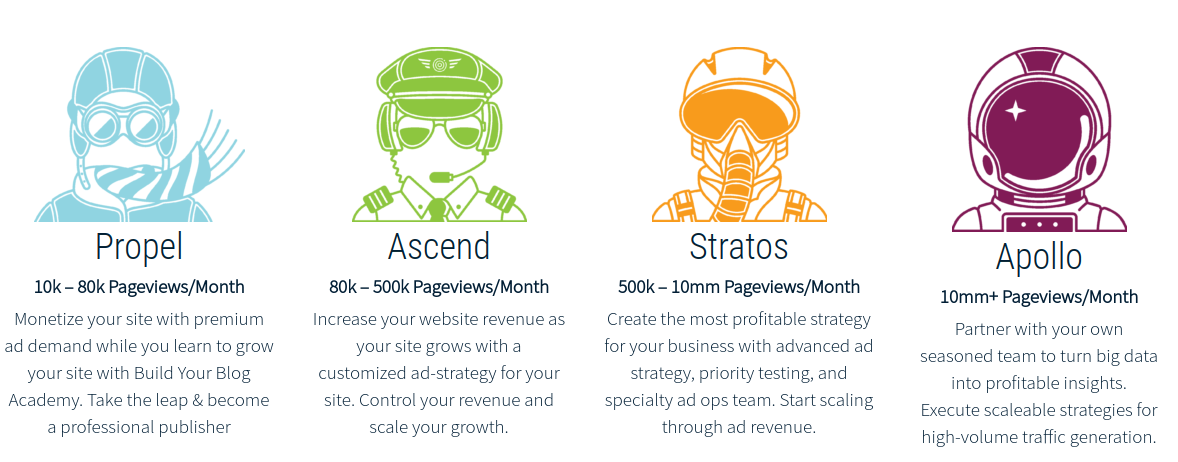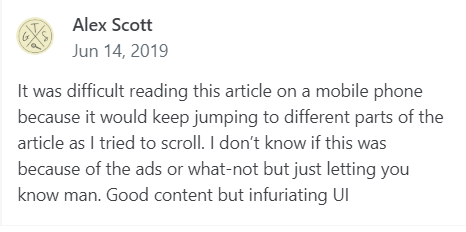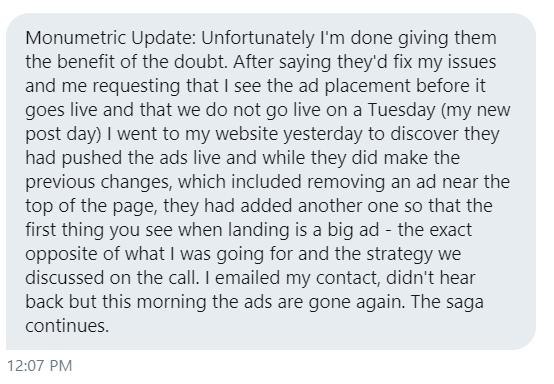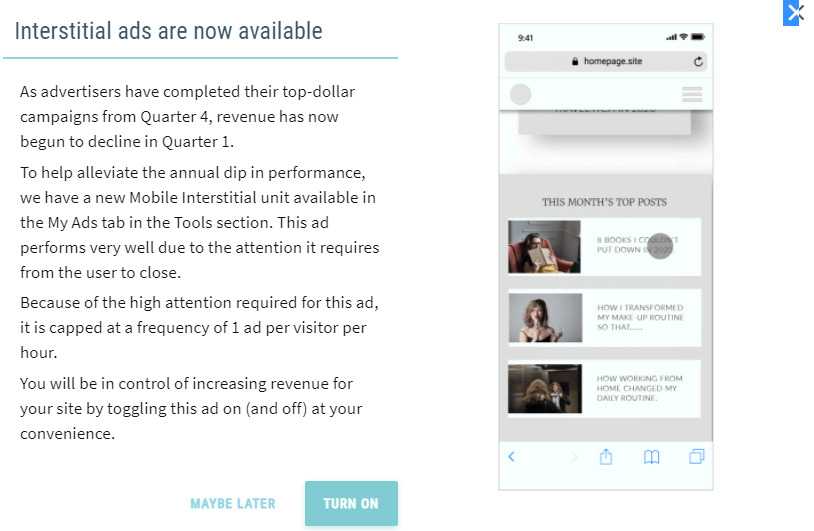Monumetric Review – How I Increased My Blogging Revenue By 400%
When it comes to creating a money making blog, having a solid advertising backbone is often a key to success.
Don't get me wrong, there are plenty of bloggers who make a killing with affiliate marketing, selling courses, or offering sponsored posts.
However, for novice and experienced bloggers alike, there is generally a time and place where hosting ads on your blog makes sense financially.
I've had advertisements on WebMonkey for quite some time now, and while I've bounced between Adsense and Media.net in the past, I'm happy to have finally found an advertising solution that is working.
And by working, I mean increasing monthly advertising revenue by roughly 400%.
Yup, you heard me: 400%.
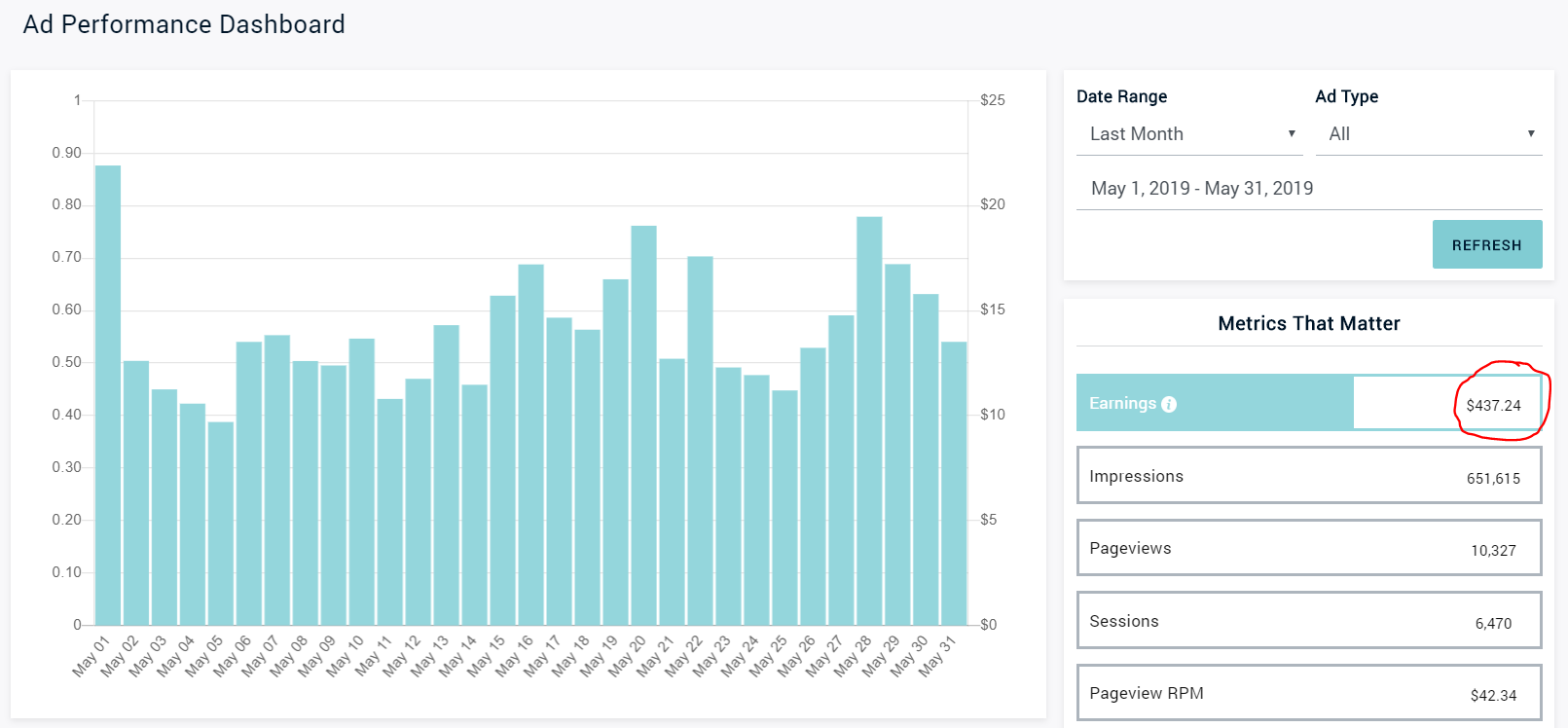
This spike in income is a result of my switch to Monumetric, an ad management platform for publishers that is helping websites of almost any size with their monetization needs.
So, if you're looking to learn more about Monumetric and how to make money with a blog, this is the review for you!
What Is Monumetric?
Monumetric, formerly known as The Blogger Network, was originally founded in 2012.
As mentioned, Monumetric is an advertisement management platform that is designed to help publishers (i.e. bloggers) effectively monetize their website with display advertisements.
Monumetric has 2 goals, as outlined on their website: to help publishers reach their revenue goals and to provide the best possible user experience at the same time.
These are certainly lofty goals, but to understand what these goals even mean, it's important to understand a bit about managed ad platforms in general.
Monumetric vs. Adsense – Managed Advertising Services –
I'm going to compare Monumetric to Adsense briefly to help highlight the difference between the most common display advertising platform on earth and something that is, well, a little more premium.
I'm also going to explain a bit about how the advertisement ecosystem works in general.
Let's say you visit an informational website about vacuum cleaners that has ads on it.
When you hit the landing page, all of the advertisers who want to advertise on websites related to vacuum cleaners enter a bidding war to show their ads to you…maybe Dyson is marketing heavily and floods the page with ads, or maybe a few manufacturers share the units.
Or, alternatively, maybe vacuum advertisers are all outbid by companies that are running remarketing campaigns (i.e. the creepy ads that follow you around the internet based on your browsing history), and all you see are ads for products/services from the websites you previously visited.
Point is this: the highest paid advertisers show their ads, and this is how the bidding system works, generally.
Now, if you host Adsense ads on your blog, you will only show ads from people advertising with Google.
In contrast, with a managed ad service like Monumetric, you can show ads from a variety of networks because Monumetric uses a private ad marketplace and header bidding to ensure your ads are always shown by the advertisers that pay the most.

This is the critical difference with a managed ad platform: you get more competition, a variety of ad exchanges involved, and a support team that works behind the scenes to maximize your revenue per pageview.
Additionally, services like Monumetric work with publishers to do things like:
- Optimize ad unit placement.
- Help with setup and reporting.
- Work behind the scenes to secure new advertising partners, which can lead to better rates.
- Deal with any technical issues or problems.
In contrast, with a self-service platform like Adsense, you basically have to slap some ad units wherever you think they'll make money and pray to god you're not going to break your website in the process.
Not ideal.
Monumetric Requirements
Since Monumetric is a managed ad platform, which comes with some perks, there are requirements to join the program.
Monumetric splits their services into 4 tiers:
- Propel: 10,000 monthly pageview minimum. For beginner publishers.
- Ascend: 80,000 to 500,000 monthly pageviews. Get a customized-ad strategy for your website.
- Stratos: 500,000 to 1 million monthly pageviews. This unlocks access to an ad ops team.
- Apollo: 10 million+ monthly pageviews. At this point, you're working super closely with Monumetric's ad team.
Most publishers will probably find themselves in the Propel-Ascend range, but it is nice to see that Monumetric can (and does) provide support for websites of all sizes.
Additionally, Monumetric also has some ‘soft' requirements, or at least this is what I gathered from the onboarding process.
When I was applying to join Monumetric, my account manager asked for screenshots of the last 30 days of Google Analytics data and a geo-traffic report.
Essentially, this means Monumetric (like every other ad network) is looking for publishers that have a decent amount of organic traffic and have users from premium countries, such as the United States, Canada, or the U.K.
This isn't explicitly stated anywhere I can find, but other ad networks like Mediavine have the same standards and it just makes sense for everyone involved: organic traffic + premuim countries = more money and happy advertisers.
The 10,000 monthly minimum is undeniably the best part about Monumetric.
If you're at this traffic level and with Adsense or Ezoic, do your revenue and website a favor and make the switch ASAP.
The Onboarding Process
This is how my on-boarding process unfolded:
- I applied to join Monumetric through their website.
- I received an email from my account manager the next day.
- My website was submitted to their advertisers for approval. This process can take 1-2 weeks.
- In the meantime, I scheduled a call with my account manager to discuss goals, strategies, and ad unit placement.
- I provided a few screenshots to help speed up the process, and I created a second user for my WordPress back-end to allow the Monumetric Team to start the setup process once I was approved.
In 1-2 weeks, I was beginning to make money with Monumetric ads.
2 absolutely vital things I want to point out here.
The call you have with your account manager is critical.
In this call, you can and should outline what sort of vision you have for your blog. I explicitly stated I did not want video advertisements, and I also elected to go with a fairly aggressive advertisement layout on both mobile and desktop.
I'll get to this ‘aggressive' layout later and the pros and cons, but do some reading/thinking and picture the sort of layout you want. Monumetric is very good at compromising, but they are also ad experts and give great advice. I'm very happy with the layout ideas they gave me, and things have been going well so far.
Note: publishers in the Propel Program have to pay a $99 setup fee. This is absolutely worth it in my opinion since your earnings will most likely make up for it/cover the cost entirely in your first month with Monumetric ads. This fee is paid during the on-boarding process.
Monumetric RPM Performance – Impact On Revenue
To get an idea of how Monumetric has impacted my blog earnings, take a look at the spike in income I've seen since implementing them:
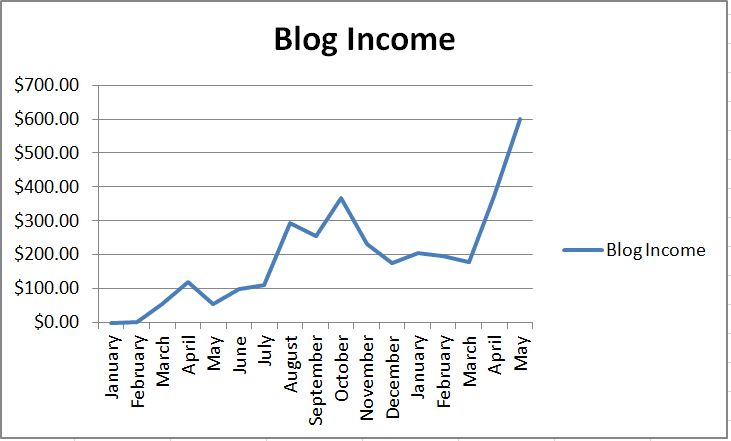
As I explain in my post The Road To A $500/Month Blog, the switch to Monumetric has really helped take me to the next step compared to when I had Adsense on my blog.
Adsense had a much lower RPM for me, and I also didn't have the greatest layout or a support team to work on optimization.
And, most importantly, Monumetric uses a pay-per-view (PPV) system.
Adsense publishers are paid anytime a user clicks an ad unit. In contrast, Monumetric pays per view, and this is important for 2 reasons:
- With Monumetric, you can generate revenue on every website visitor, not just clickers.
- You can expect more stable revenue with a PPV model, assuming your monthly page views are consistent.
Adsense revenue was all over the place.
In contrast, I'm now earning a stable $7-$15/day with Monumetric ads and I can factor this in to decision making (like paying for a website redesign, which is currently in progress).
Alright, so what about site speed?
Impact On Website Speed
Anytime you add something to your website, it will impact performance in some way.
Ad units can be especially demanding on your website, and the fact that you have to serve more stuff to your viewers inevitably slows things down a tad and changes the reading experience.
However, the internet is full of ads, so it isn't like this is a new concept for readers, and if done correctly, ads shouldn't negatively impact user experience.
This is where I, along with the Monumetric team, messed up.
I elected to go with an aggressive ad unit placement that had in-content/sidebar ads, and I also wanted to units to refresh periodically.
After running this system for a few weeks, I started to get emails and comments along these lines:
My site was becoming slow and painful to read, and when ad units were refreshing, things just bounced all over the damn place. I apologize to anyone who had to go through that mess of a website.
Thankfully, after emailing the Monumetric Support team with my concerns, the refresh issues were fixed and everything seems fine (I think? Let me know if not).
Now, this brings me to my next (and perhaps most important) point: the Monumetric Support Team.
Publisher Support – My Favorite Aspect Of Monumetric
When you become a Monumetric Publisher, you gain access to a support team that is always an email away from being able to assist you.
I've emailed the support team many times since becoming a publisher with requests to change my ad layout, panic attacks over site speed, and a myriad of other questions.
All of my concerns have been appropriately answered within 12 hours or so, and the quality of support is very good.
It did suck to have ads bouncing all over the place, and I don't really know how that was allowed to happen, but the support staff is great at answering concerns and fixing problems quickly.
Plus, if you are a publisher in a higher tier, you get even more love and attention (each tier gets one level higher in terms of their personalized Ad-Ops service team).
Again, you will not get this type of support with a self-serve ad platform, so keep this in mind if you are on the fence!
Payment Schedule
The Monumetric dashboard makes it quite easy to track your daily revenue and payment schedule:
However, be aware that Monumetric pays in net 60 terms.
This means that after you earn revenue for one month, you will have to wait an additional 60 days for that revenue to be paid to you (assuming it clears, which is should, unless you're doing some fraudulent stuff…very naughty).
Monumetric currently pays through PayPal if you are not a resident of the United States, while U.S. residents can use direct deposit. Payments are also processed within the first 10 business days of a month.
Monumetric Pros, Cons & Alternatives
It wouldn't be a fair review if I didn't go over both sides of the story, as well as some Monumetric alternatives.
The Pros
- Revenue Potential – I saw a 400% increase in revenue from making the switch, and from the feedback I've seen, many other bloggers experience the same thing when moving from a self-service platform to a managed ad service.
- Stable Earnings – this is thanks to PPV.
- Great Support Team.
- Ongoing Optimization.
- Low Barrier To Entry – 10,000 monthly pageviews (not sessions) can get you in.
- Low Commission Sharing – Monumetric only takes 15-30% commission on your revenue (this is taken before the numbers you see on your dashboard).
- A Decent Referral Program – Earn 2% of the revenue generated by any publisher you refer for 12 months.
The Cons
- Next-Day Reporting – Unlike Adsense, you don't see your revenue until the next day. I don't really care about this, and this shouldn't be a big deal for most publishers, but keep this in mind.
- Net 60 – Unlike Adsense which pays in net 30 terms, Monumetric pays in net 60. However, this is fairly common in the managed ad universe.
- Setup Fee – Smaller publishers need to factor in the $99 to their earnings.
Now, I left out information about the onboarding process because while I had a stellar experience, it seems many people are not having the same luck:
I've seen a few threads like this, and here is what I'll say.
I get the vibe that Monumetric is a growing, excited tech company with a lot of potential and exciting ideas, but that they are probably swamped with work.
I don't know if they are short-staffed or undergoing some changes, but it definitely seems like many publishers have to wait a while to get in the program. Again, keep in mind that advertisers also need to approved publishers, so the delay might not be entirely on Monumetric's end.
Whatever the case, all the changes I've seen over the last 2 months have been great…we got a better reporting dashboard, a referral program, and access to blogging training videos and tips. It's all good stuff so far!
I'm loving my experience with Monumetric so far, and I definitely think it is worth giving them a try!
Edit: 12/04/2019 – one of my friends who runs the blog A Purple Life has shared her unfortunate story of Monumetric onboarding with me.
As you can see from her message, it seems like the Monumetric team didn't follow what was outlined in her strategy call, and ads were also pushed live on the incorrect date.
A few of her other messages outlined more problems: delayed communication, poor publisher support, and an overall rough onboarding procedure.
My friend's experience has been completely different than mine, and it's really unfortunate. I've had an amazing experience with Monumetric ads, but you need to proceed with some caution.
Don't expect a smooth ride, fast setup time, or a flawless launch. Monumetric seems like a young company with a lot of potential in my eyes. However, they certainly haven't given everyone top-notch service and have a ways to go in the custom service department based on what I've heard.
Monumetric's New Interstitial Ads & Video Ads
I wanted to write another quick update for this review since there's been some changes recently that should help boost your Monumetric RPM.
Most notabl, Monumetric now lets publishers enable interstitial ads.
Interstitial ads are ads that take up the whole screen and appear between content or activities on a website.
For example, if you enable this feature, a reader can get served a full-screen ad if they click to another post or category on your blog.
Interstitial ads pay very well because of their commanding nature, and if you run a website with a lot of traffic/a news style website, this feature should be great news. Just keep in mind, it does impact reader experience so make the change with caution and monitor feedback.
Another feature that will help your Monumetric earnings is the new video feature.
Monumetric is still rolling this out to different publishers, but you can now upload video content to your blog and have ads play within the video! Pretty awesome!
Monumetric Vs Mediavine
People generally make the Mediavine vs. Monumetric comparison since these are two managed ad services with some of the lowest monthly session requirements.
However, I wanted to update this Monumetric review because things have changed pretty significantly here.
Firstly, I have left Monuemtric for Mediavine because I wanted to try a new ad network out. The change has been phenomenal for my revenue:
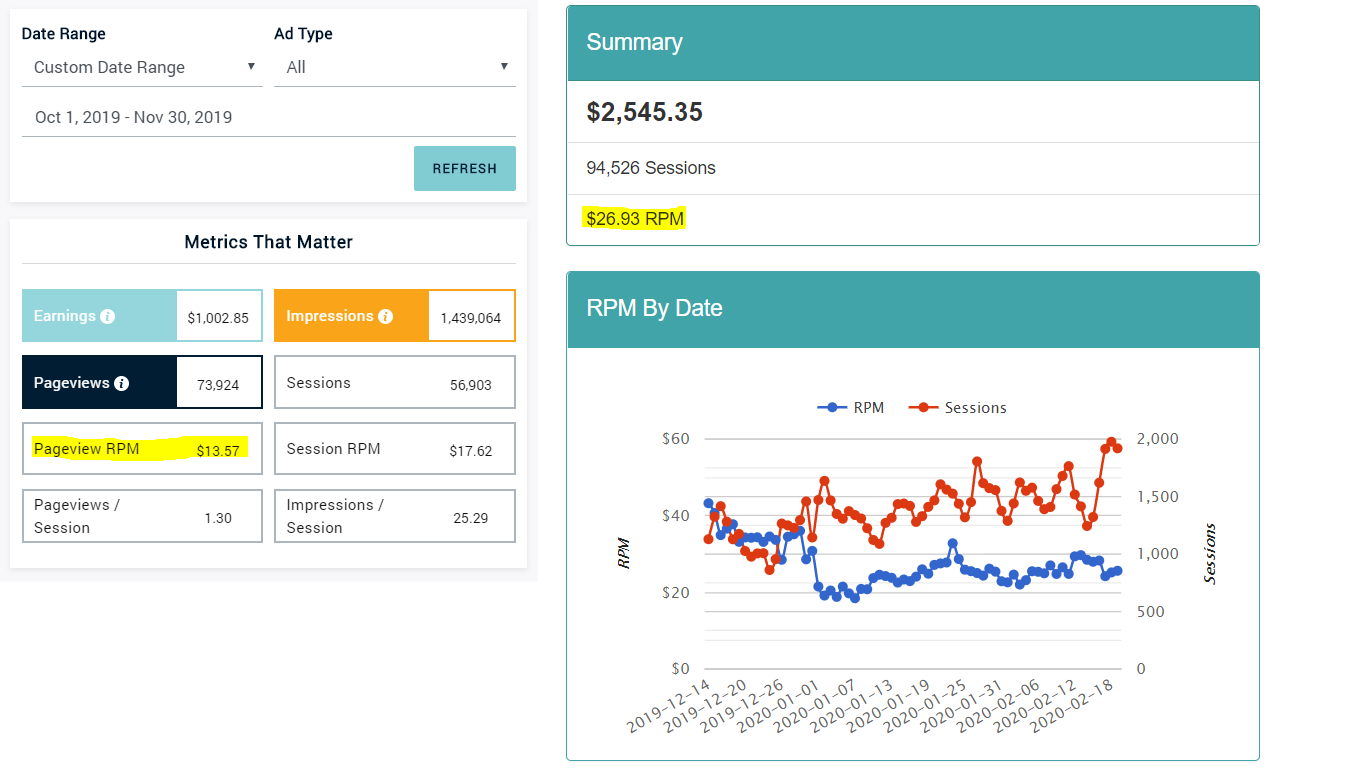
Mediavine is basically doubling my advertising revenue per month, and the onboarding experience has also been stellar.
Additionally, I find Mediavine ads perform better, and I haven't had any issues with ads causing my pages to bounce or lead to an unpleasant experience for readers.
However, Mediavine now has more strict requirements for publishers.
Mediavine used to take 25,000 monthly sessions to apply, alongside having a quality site. It now takes 50,000 monthly sessions.
You can read more about these changes in my Mediavine review. However, the bottom line is that Monumetric is now the best choice for smaller publishers.
Reaching 50,000 sessions takes time, and I even know publishers who are at that amount but have stuck with Monumetric.
My Overall Experience With Monumetric – Final Thoughts
If you're just starting out and are growing your blog, aim for Monumetric. The revenue boost you can get has the potential to transform your website, and it's a great alternative to Adsense or Ezoic.
Whatever route you take, I think there are an overwhelming number of benefits to using a managed ad platform instead of something like Adsense or Media.net.
I suggest you take some time to research your options, but also remember to let things play out.
If you pick a network, give them 60-90 days to see how performance shakes out, and try not to be like me and have an aneurysm the second an ad unit breaks.
Just note: if you want to leave Monumetric for another ad program, you must give them 30 days notice. After that, you can take their ads down and integrate a new provider on your website and incur 0 fees. You will still be paid out your remaining ad balance and referral earnings as well.
I hope you have found this review of Monumetric to be useful!
If you want to signup for Monumetric with my code, I would really appreciate the support.
If you're planning on starting your own blog, I also recommend using SiteGround web hosting to get started. I use SiteGround on every website I launch, and I absolutely love their performance and customer support.
You can also watch one of my latest videos on the exact methods I use to make money blogging!
[mv_video aspectRatio=”true” doNotAutoplayNorOptimizePlacement=”false” doNotOptimizePlacement=”false” jsonLd=”true” key=”n0ykkjnxxa7qfzkwgwmo” sticky=”false” thumbnail=”https://mediavine-res.cloudinary.com/v1598617391/mvvypfkgbdhpzyqjceiv.jpg” title=”Make Money Blogging” volume=”70″]Catch you guys in the next one.Monumetric Review - Quick Facts
Name: Monumetric
Description: Monumetric is a full-service ads partner that helps publishers monetize their website. With lenient requirements, strong ad performance, and solid publisher support, Monumetric used to be my ad network of choice before This Online World grew and switched to Mediavine.
-
Earnings
-
Requirements
-
Onboarding
-
Publisher Support



